What is Final-Mile Delivery?
Final-mile delivery refers to the last leg in the supply chain, when goods are transported from a warehouse or fulfillment center to their final destination (sometimes via a transportation hub). The term “last-mile delivery” means exactly the same thing.
The distance traveled may be longer or shorter than an actual mile, and it covers both B2B and residential delivery. The goal is to get items to their destination as quickly and cost-effectively as possible.
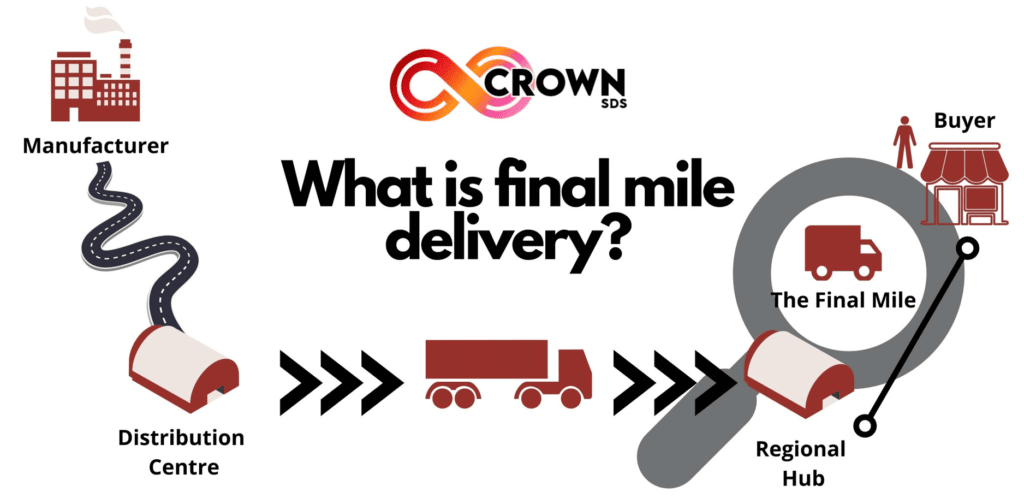
Categories of Final-Mile Delivery
Items transported during final-mile delivery are categorized as either light or heavy goods:
Light Goods
Light goods are defined as items that fit within the size and weight limitations of the US Postal Service and other delivery providers such as UPS, DHL, and FedEx. These items weigh less than 150 pounds.
Delivery of light goods often involves the “ring and run” method, when the driver drops the package on a doorstep without needing to wait for a signature or other interaction with the recipient. There’s no exact delivery time scheduled.
Heavy Goods
These are items weighing more than 150 pounds. They require larger vehicles and specialized handling, and include home furniture, office equipment, and domestic appliances.
For deliveries that require unpacking and installation, companies often provide a “white glove” service with a scheduled appointment. Delivery personnel may also provide orientation for products, handle exchanges and returns, and remove old items for disposal or recycling.
Challenges of Final-Mile Delivery
Final-mile delivery comes with many challenges. While some are out of your hands, others are caused by inefficiency and lack of visibility across your operations.
Increase in E-commerce Trade
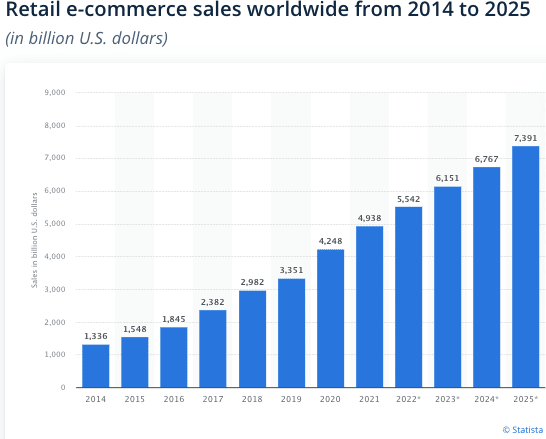
Source: statista.com
Well before the pandemic, the popularity of online retail was already skyrocketing—and it’s expected to overtake physical retail, possibly as early as 2024. The more orders are placed, the more complex your last-mile logistics become.
If you don’t have robust systems in place, you can easily get swamped by high order volumes. This risks final-mile delivery delays, and your customers can easily turn to a competitor that gets things right.
Vast Range of Options
Retailers are also under pressure to provide multiple options for shopping and shipping, including a range of channels and delivery speeds. You may also offer free shipping on certain orders, or go with flat-rate pricing.
And that’s before you even think about dropshipping, partial, or multi-warehouse order fulfillment. All these variables add to the challenges of last-mile delivery, and if you don’t keep on top of who’s ordered what from where, you’ll run into problems.
Impact to the Environment
Extra trade means more delivery vehicles, which is not good for the environment. Even if you keep delivery routes as short as possible, you still have the issue of vehicles idling in traffic, and the wastefulness of not filling trucks to capacity.
It’s important to think about sustainability, especially as two thirds of customers factor it into their purchase decisions. But you also need to consider your profit margins—smaller businesses may struggle with the cost of going green.
Autonomous Vehicles and Transportation
The global autonomous last-mile delivery market is projected to reach $84.72 billion by 2030. Delivery solutions like drones, robots, and self-driving vehicles can reduce costs as you don’t need to pay human drivers or worry about traffic jams.
However, this technology is expensive, and could be affected by Wi-Fi outages, electronic failures, or cyberattacks. For now, it makes sense to use autonomous transportation sparingly rather than ditching traditional vehicles altogether.
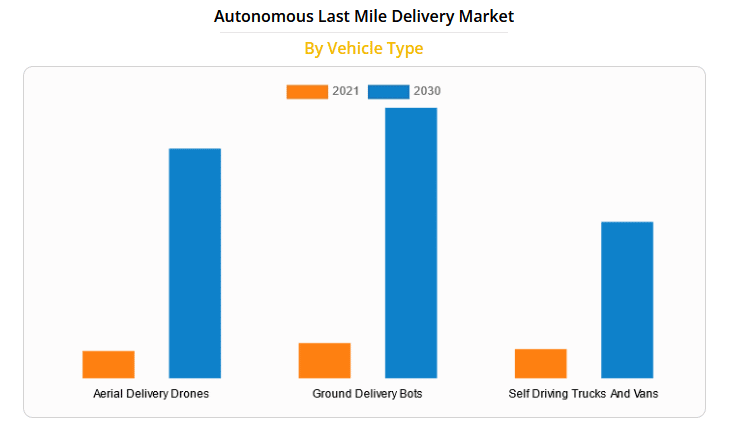
Source: alliedmarketresearch.com
Technology
Without the right tech, final-mile logistics are even more challenging. Many businesses struggle with legacy architecture, which is glitchy, unproductive, and costly to maintain—and some even try to get by with manual systems.
Either way, it means you can’t accurately process and track orders, or give updates to customers. And you’ll find it difficult to manage multiple carriers and routes. Your best bet is to streamline your fulfillment processes with advanced software like Brightpearl.
Tips to Lower Costs of Final-Mile Delivery
Final-mile delivery costs can quickly add up. Here are a few ways you can reduce spending:
Route Planning
Life would be simpler if all your customers lived near each other. But that’s not the case, especially in rural areas. You have to find the shortest and most cost-effective routes, which might involve using multiple carriers and sharing truck capacity with less-than-load (LTL) deliveries.
Route optimization software harnesses real-time information and sends notifications to drivers and customers. Micro-warehousing is also useful as it puts your inventory closer to the customer base, while Brightpearl enables auto-fulfillment based on the most appropriate warehouse location.
Data Analysis
It’s important to monitor your data to see which deliveries were successful and which weren’t, and where you might be losing money. Could the route be optimized further? Are you utilizing full truck capacity?
You can also track customer satisfaction, and use sales forecasts to ensure you have enough drivers for peak times. Once you’ve spotted the bottlenecks in your delivery operations, you can figure out ways to reduce last-mile delivery costs.
Proof of Delivery
Proof of delivery is documentation signed by the recipient and time-stamped by the driver to confirm the item’s been delivered. If the customer isn’t home, the driver can take a photo of the parcel in a safe place or a neighbor’s address.
This is an important aspect of traceability and reduces the risk of missing items, which would cost you money for replacements and damage your reputation. You’re also protected against disputes or false claims.
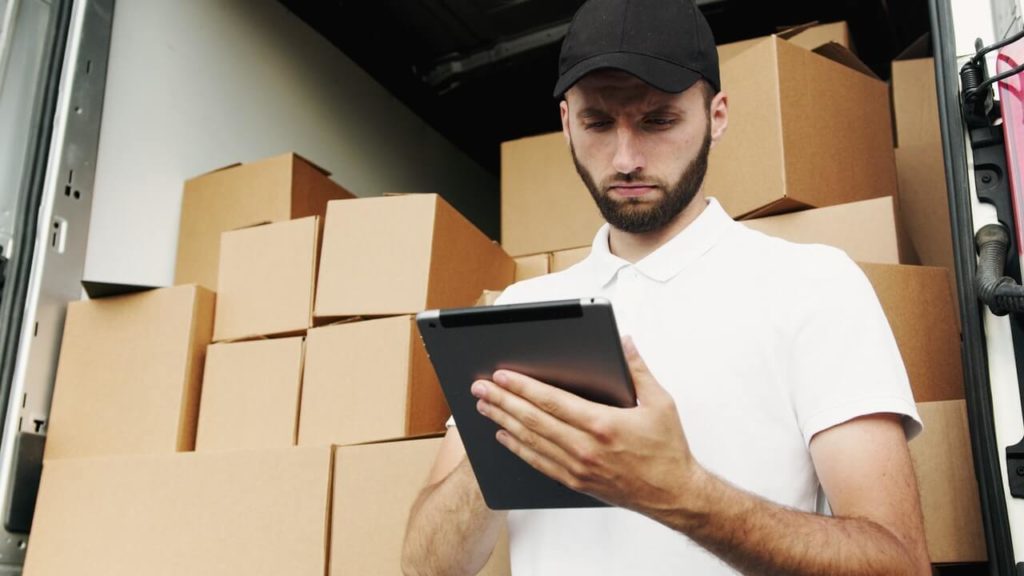
Two-Way Communication
Another way to cut costs is to let customers communicate directly with their driver—this will reduce failed deliveries, as customers can provide extra directions or instructions on where to leave parcels.
Good communication also includes sharing information with your carrier, so that any problems are spotted quickly. You’ll know in good time if your carrier can’t take on a certain job, and drivers will be notified of any changes to pickup times.
Ways to Improve Final-Mile Delivery
There are several more changes you can make in order to optimize final-mile delivery:
Scheduling and Dispatching
Inefficiencies in final-mile delivery often arise from time-consuming processes. It’s a big task to manually schedule delivery jobs and dispatch orders, and it’s prone to error. Implementing technology helps you make the best use of resources and reduce costs.
Automation will always assign the most suitable driver to each delivery—leaving managers free to concentrate on other areas of the business. Another option is to outsource fulfillment to a third-party logistics company (3PL).
Dynamic Routing
Dynamic routing enables you to plan the best routes based on maximum delivery points in one journey. It highlights weather conditions and traffic issues in urban areas to ensure drivers have accurate information.
By factoring in preferred delivery times, the system automatically groups orders with the same delivery slots and locations. This helps to reduce transport costs, as well as benefiting the environment.
Tracking
Tracking isn’t only for a parcel’s final journey. It needs to start with barcode scanners to ensure the correct items are picked and packed, loaded onto the delivery vehicle, and logged in both your system and the driver’s app.
Then you can track the journey using GPS, adjusting the route if necessary. You should also send updates to customers (including a map to show where the driver is), and obtain electronic proof of delivery.
Source: blog.locus.sh
Flexible Delivery
Offering multiple delivery options and convenient time slots will help you reduce repeat deliveries. The average cost of a failed delivery in the US is about $17.20, so it’s definitely something to avoid!
If your system is smart enough, you can allow customers to change their slot on the fly. It’s also worth considering crowdsourced home delivery, as this offers the flexibility of on-demand scheduling.
Contactless Driver
Contactless transactions came into their own during the pandemic, making us all more aware of hygiene practices. Committing to everyone’s safety is a good way to improve the customer experience.
Beyond the health concerns, going contactless also has the benefit of speeding up interactions. For example, with fast-food delivery, neither party has to carry cash. And parcels can be delivered with the ring-and-run method.
Visibility
Visibility is a huge part of making final-mile delivery work. It helps you keep a close eye on the whole supply chain and how it affects the final stage, and use historical data to optimize routes and assign suitable drivers.
It also enables you to meet customer expectations by giving them a precise delivery time (and sticking to it). You can spot problems early enough to adjust your plans, and figure out ways to maximize productivity and vehicle capacity.
Ways to Boost Customer Experience of Final-Mile Delivery
Final-mile delivery is typically the only time you get to interact with customers, which gives you an opportunity to exceed their expectations.
Personalization
80% of frequent shoppers say they only buy from brands who personalize the experience, which highlights the importance of the personal touch. It’s important to understand customers’ needs and make them feel that the delivery service is tailored to them.
You can do this by providing flexible delivery options, using custom packaging, adding notes or free gifts to parcels, and offering VIP treatment to loyal customers.
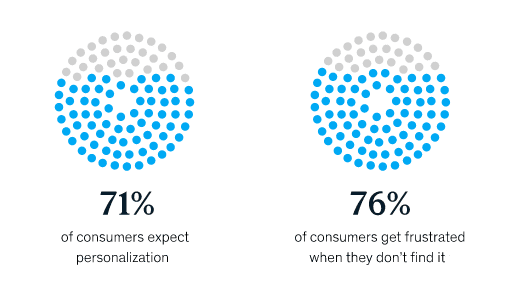
Source: mckinsey.com
End-to-End Visibility
Customers want to be kept in the loop throughout their parcel’s journey. Tracking technology helps you give them an accurate ETA with real-time updates, so they feel reassured that the item is on its way—and they don’t have to call customer support for information.
Allowing them to communicate directly with the driver is another way to help them feel in control. And providing lots of information shows your brand is transparent and trustworthy.
Online Chat
If customers need to report a problem or adjust their delivery slot, online chat works well. It’s faster and more convenient than a phone call, and you can deploy smart chatbots before escalating to a human agent if necessary.
Just make sure you have other contact options available to suit customer preferences—and above all, ensure you respond to all inquiries as quickly as possible!
Pickups
As well as flexible delivery slots, it’s good to offer the option for customers to pick up the goods themselves. Curbside pickups became popular during lockdown, but you can also enable them to buy online and pickup in store (BOPIS) or collect items from a parcel locker.
These options give customers extra convenience, while using lockers and BOPIS help you reduce the number of journeys and delivery drivers required.
Seamless Returns
Returns can be a nightmare for retailers, but with an average e-commerce return rate of 20%, you need to make the process as smooth as possible for yourself and your customers. It should be as simple for drivers to collect returns as it is to deliver the original items.
You can also reduce journeys by enabling customers to drop parcels at a collection point. Either way, you’ll need a robust returns management system and a set of clear policies.
Same-day Delivery
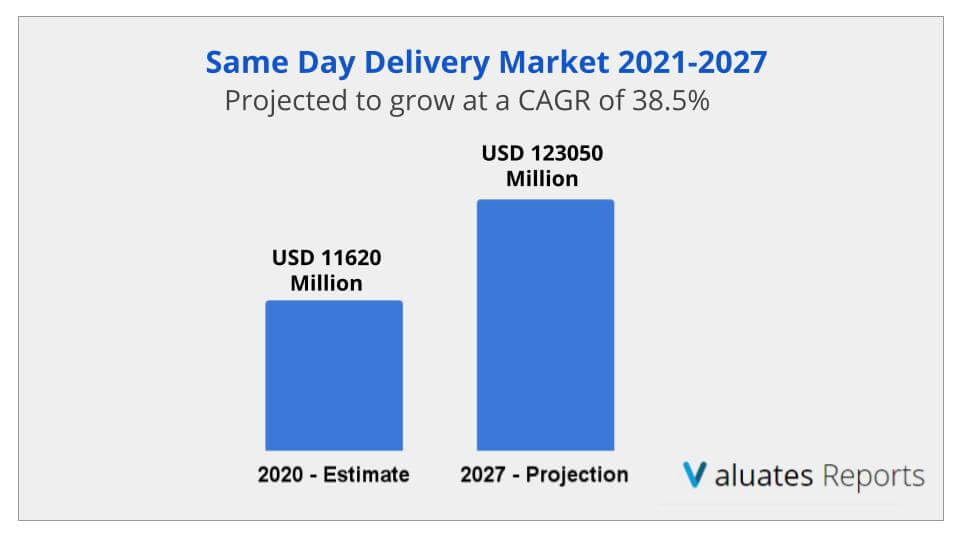
Source: reports.valuates.com
Same-day delivery is the ultimate preference for many customers, so if you can offer this (and get it right!) then you’re a step closer to competing with Amazon. But this requires a super-fast turnaround in the warehouse.
The fulfillment and shipping process needs to take place within a few hours of an order being placed, so you need a fool-proof system with automation to speed up picking and packing and avoid any errors.
Final-Mile Delivery With Brightpearl
As a retail operating system, Brightpearl is built by people who understand the challenges of e-commerce, including final-mile delivery. It features integrations with all the major carriers and logistics providers, so you can manage them in one place and sync data for a smooth delivery process.
The advanced Automation Engine streamlines all your workflows to ensure you’re prepared for the final-mile stage, starting with inventory management and continuing through fulfillment and shipping. It helps you reduce human error by 65%, and cut shipping time by 92%.
As well as automating dropshipping, partial and multi-location fulfillment, and backorders, you can set specific rules for different items or customers and select the most cost-effective shipper for each order. Customers will appreciate the flexible delivery options, especially when you use data from the built-in CRM to personalize their orders.
Other Benefits of Using Brightpearl
Reduced Costs
Because Brightpearl is an all-in-one platform, you don’t need to purchase or toggle between a bunch of other apps—and all the automated tools work smoothly together for a productivity boost that can halve your labor costs.
360-Degree View
With advanced inventory and warehouse management, you can keep tabs on your stock levels, which update automatically whenever goods are sold, shipped, transferred, or returned. Barcode scanners help you log items accurately, while the POS system shows stock availability in all locations.
Forward Planning
Inventory Planner enables you to make forecasts for purchasing stock and predicting peak order times, so that you’re always ready to meet demand. Brightpearl also provides advanced analytics and reporting capabilities to help you spot areas for improvement.
Scales With You
Brightpearl is designed to help you Grow Fearlessly, with a scalable tech stack and integrations built for high order volume. Your business will be supported from implementation onwards by a personal Customer Success Team.
Final Thoughts
As e-commerce continues its rapid growth, FedEx estimates that the number of parcel shipments in the US will double to 100 million per day by 2026. If your company wants a piece of the pie, you need to solve the final-mile problem.
That means ensuring flexible, timely delivery to keep customers happy, and reducing your costs with route optimization, accurate planning, and streamlined workflows. Visit Brightpearl’s website to learn more about how the software can help you meet those goals.
